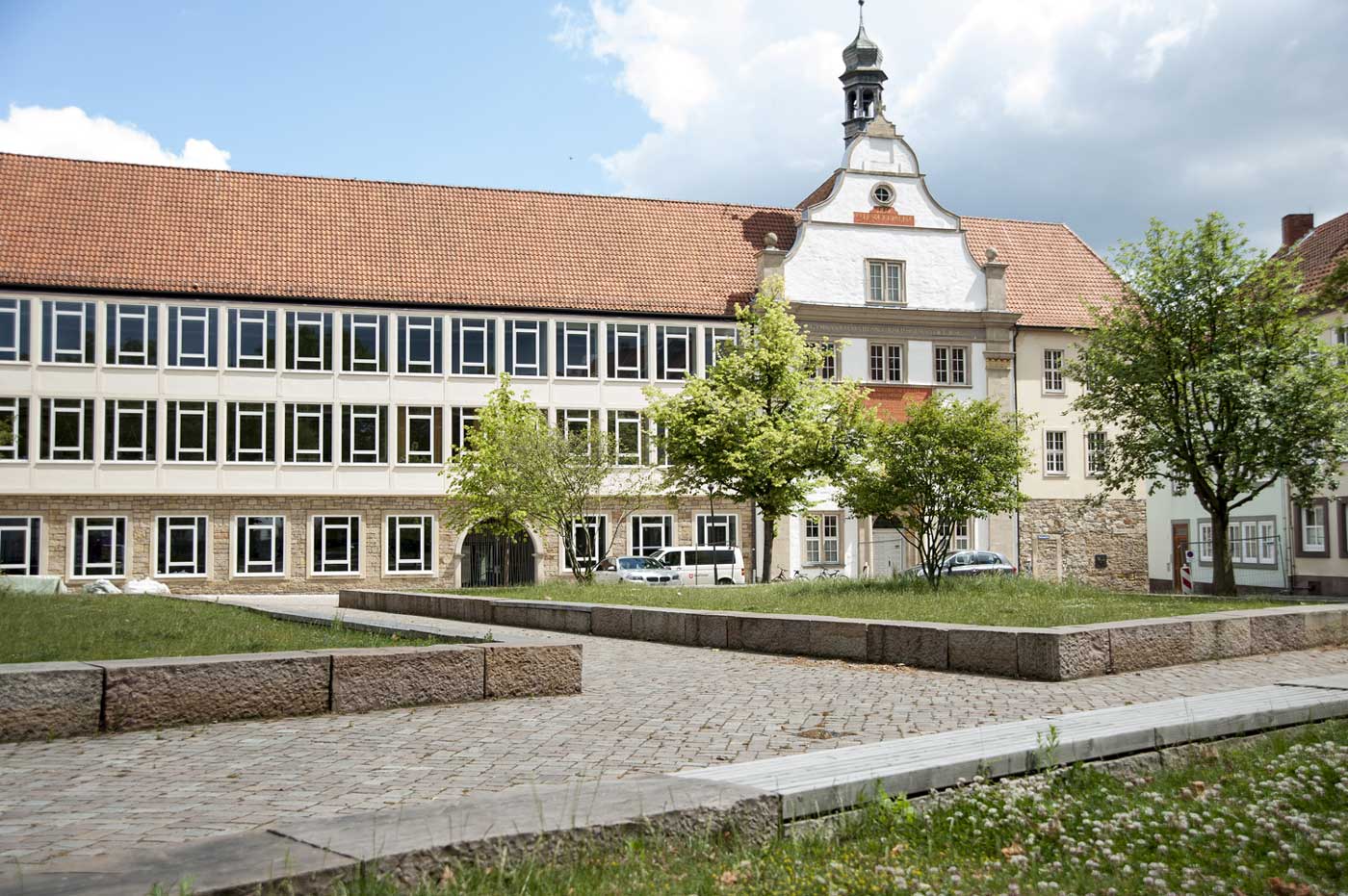Restoration of the Cathedral courtyard and St. Anne’s Cemetery
Not only has the interior of the Hildesheim Cathedral been redesigned, but so has the exterior: both the courtyard and St Anne’s Cemetery with the thousand-year-old rose tree have proven themselves to be peaceful and newly organised oases in the hustle and bustle of the city.
The main characteristic of the newly designed Hildesheim Cathedral courtyard is space: previously, there were cars crammed together bumper to bumper, but now, there is a mostly car-free zone with traffic calming in situ. Only the few vehicles of the residents of the Cathedral courtyard and the employees of the Josephinum Episcopalian High School are allowed to park on the courtyard. Thus, the majestic World Heritage Cathedral has a much greater impact. For the first time, the inner courtyard and the rose tree are accessible via a ramp for people in wheelchairs and with disabilities.
A small "campus" on the Cathedral courtyard
The paving made from light Indian sandstone is new. It fits with the colour scheme of the Cathedral but, when wet, it will become a different, reddish hue and thus provide additional visual stimuli. The production of the sandstone was certified, therefore ensuring that it was produced under fair working conditions. 2500 tons of paving stones were used. Slender columns of light and skylights that have been set into the ground guide visitors to the Cathedral.
The southern courtyard also serves as a small "campus" more than ever before, and as a schoolyard for the Josephinum. New planting and seating ensure that pupils feel at ease during breaks and free periods. Small oases for playing or chilling, relaxation and leisure activities have been created. Three small islands with tall fountain grass and serviceberry trees have been set up.
St. Anne’s Cemetery: an oasis with the thousand-year rose tree
St. Anne’s Cemetery, with the thousand-year-old rose tree, has always been an oasis. It is located between the two small cloisters and the apse of St. Mary’s Cathedral, where the legendary thousand-year-old rose tree is towering. Inspired by the historic image of St. Anne’s Cemetery from the 19th century, St. Anne’s Cemetery will once again have a romantic aura.
The new design of the landscape architect Hahn von Hantelmann from Hamburg has created a stronger order, yet at the same time a freer design, for the canons’ cemetery and the space surrounding the rose tree, as well as the planting along the cloister. The paths wind through the grounds, seemingly natural and untouched by human hands. A small number of stepping stones made from natural stone lead to the consciously unstraightened , partly very weathered gravestones of the former canons. Some of them have been replanted.
All year round, something is growing and blooming in St Anne’s Cemetery – without competing against the thousand-year-old rose tree. Instead of an iron gate, it is now enclosed by a low box-tree hedge.


